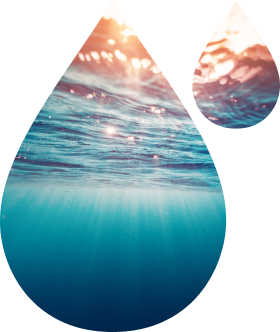The EU blue economy
The concept of the Blue Economy is multifaceted and often subject to varying interpretations. As a result, definitions differ significantly. One of the primary challenges in defining the Blue Economy is delineating its scope, as it encompasses a broad range of coastal, marine, and ocean-related activities with complex socio-economic benefits and environmental impacts.
The delineation of the Blue Economy largely depends on the sectors included and the extent to which indirect upstream and downstream effects can be identified and measured. Hence, deciding which sectors and activities to include when analysing the current state and size of the Blue Economy, is an important first step.
For the purposes of this Report, and for coherence with its previous editions published since 2018, the term Blue Economy includes economic activities that are:
- marine-based, including those undertaken in the ocean, sea and coastal areas, such as capture fishery and aquaculture, offshore oil and gas production, offshore wind energy production, ocean energy production, desalination, shipping and maritime transport, and marine and coastal tourism;
- marine-related, including those that use the products of and/or produce products and services for marine-based activities, such as seafood processing, marine biotechnology, shipbuilding and repair, port activities, maritime communication, use of maritime equipment, maritime insurance and maritime surveillance.
Yet, the Blue Economy also includes marine education and research, as well those segments of the public sector directly tied coastal and ocean stewardship – such as national defence, the coast guard, marine environmental protection.
A challenge in estimating the scope and size of the Blue Economy is the limited availability of data for certain maritime sectors. This lack of data, together with the lack of standardisation in data collection among Member States hinders the comparability and consistency of data across sectors and Member States. To address this challenge, we use the latest structural business statistics (SBS) published by Eurostat at the time of writing this Report, covering 2009-2022. These data are complemented with other data sources and preliminary data from Eurostat to estimate 2023 values and obtain a more comprehensive and up-to-date view of the EU Blue Economy.
In addition, the ocean delivers economic benefits that are difficult to quantify – ranging from its function as vital marine habitat and natural carbon sink to its roles in coastal protection, waste recycling and storage, and the regulation of climate and biodiversity.
Moreover, emerging and innovative sectors such as Blue biotechnology are developing rapidly. The activities in these sectors need to be included and measured, so as to comprehensively assess the scope and size of the Blue Economy.
This work is undertaken in the context of the EU Blue Economy Observatory. The Observatory provides a more detailed analysis per sector and country, which is continuously updated.

